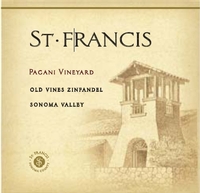Once upon a time — a lifetime ago, really — I adored Zinfandel, the spicy, brambly red wine that was unique to California. Somewhere along the way, zinfandel lost me. I don’t recall the precise moment, but it could have been the last Zinfandel Advocates and Producers (ZAP) tasting I attended at Fort Mason in San Francisco.
Although it’s been years since that event, I remember leaving in disgust. Within an hour, most of those in attendance were bombed out of their minds after gorging on the high-octane Zins being presented. Or so it seemed.
That was at the beginning of a creepy phase when winemakers started to compete with each other to prove which one could grow the ripest grapes and make the Zin with the most heft (a winemaker would correct me and insert the word "flavor" in place of heft).
So Zinfandel and I parted company, with an exception or two. Grgich Hills always made a balanced Zin, and it was a pleasure to assess those samples when they came my way. In general, however, my assistant knows to check the alcohol by volume (ABV) on Zinfandel samples and pull any that approach 16 percent. The ABV on these wines is often much higher than the stated level because vintners have leeway to exceed it by as much as 1.0 to 1.5 percent. Simply put, a 12.5 ABV wine could actually come in at 14 percent, and a 16.0 ABV could go in the bottle at 17.0.
Still, I do have fond memories of what I consider the heyday of Zinfandel in the late 1980s and early 1990s and occasionally get the urge to give Zin another shot, so to speak.
I decided to take a chance on the 2009 St. Francis Pagani Vineyard Old Vines Zinfandel from Sonoma Valley. I chose this particular wine because I respect the producer and love the region. I did not check the ABV before pulling the cork. That was a mistake.
 The St. Francis Pagani Zin tasted pretty good, no doubt about it. But the heft, the jammy black fruit, the slight buzz I felt almost immediately all raised a red flag. I picked up the bottle to check the alcohol. The type was so small I couldn’t read it. Even with a magnifying glass, it was difficult. I eventually determined the ABV was a boozy 16.1 percent.
The St. Francis Pagani Zin tasted pretty good, no doubt about it. But the heft, the jammy black fruit, the slight buzz I felt almost immediately all raised a red flag. I picked up the bottle to check the alcohol. The type was so small I couldn’t read it. Even with a magnifying glass, it was difficult. I eventually determined the ABV was a boozy 16.1 percent.
Now, to some that might not seem so bad. After all, we sip Port (a wine fortified with distilled spirits) at about 20 percent ABV and think nothing of it. We drink 80 proof vodka (40 percent ABV) and don’t get sloshed unless we drink too much.
But here’s the rub. Port is typically served in small quantities following a meal. Other than Sir Winston Churchill, who reputedly consumed a bottle of Port every day in his later years, I know of no one who drinks Port in such quantity. And vodka is typically mixed with other beverages, diluting the ABV to much lower levels.
So let’s do the math. Two people share a bottle of the 16.1 ABV St. Francis Pagani Zin at dinner. Each person enjoys half the bottle, about 13.5 ounces. At 16.1 ABV, that comes out to 2.16 ounces of alcohol. A third person enjoys five vodka & tonic cocktails, each with an ounce of vodka. That works out to 2.0 ounces of alcohol — total.
Now suppose the vodka drinker offered to drive you home. Would you rather go with the Zin drinkers, who actually consumed more alcohol? I would like to think you would call a taxi, instead.
Of course, everyone’s body is different, and some would have the weight and mass to imbibe at such a high level of ABV and be able to function and not go over the legal limit for driving. Others wouldn’t.
Why take the chance? That question is aimed more at the wine producer than the wine consumer. The answer, I believe, is that some in my profession are fond of these high-alcohol wines and give them rave reviews. This is the "gobs and gobs of fruit" crowd, and in my humble opinion, they are playing a dangerous game. The producers are merely making the wines that will garner the most effective praise.
That’s a dangerous game, too. Yes, these wines taste good, at least for a time. But they weren’t too shabby back in the day of 14.5 ABV. The difference isn’t what you might think — 1.5 percent. The difference between a 14.5 ABV wine and a 16.0 ABV wine is more like 10 percent, and greater if the producer of the 16.0 wine fudges the number.
My fear is that someone who can’t handle that jump in alcohol is going to get hurt — and that an antagonism to wine in general could result. It’s difficult enough at modest levels of alcohol to manage a night on the town and drive home safely. Why flirt with disaster?
It seems to me that it would be in the wine industry’s best interest to police itself and rein in the purveyors of these so-called fruit bombs before someone decides to do it for them.
If nothing else, they could at least print the ABV declaration on the label in larger type. That would be a start.
Email comments to [email protected] and follow Robert Whitley on Twitter @wineguru.
8
